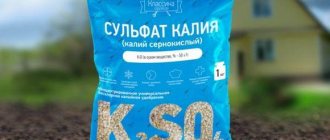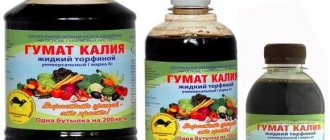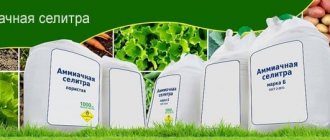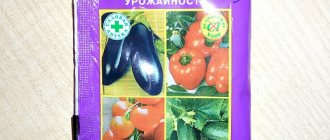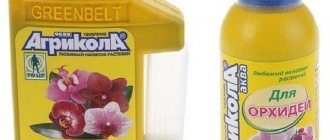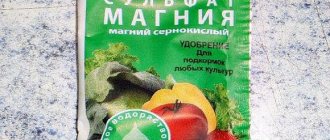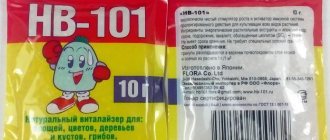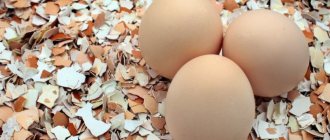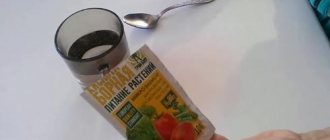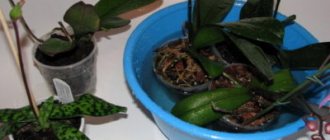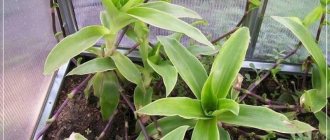Question: Please tell us about the fertilizer - potassium monophosphate (MPP), its price is much higher than others, what are its advantages? In what period should it be used, for what plants? What fertilizers should a gardener always have on hand when growing flowers and vegetables?
Answer from Vladislav Kundasev, host of “Consultant Gardener” : The cost of potassium monophosphate is really high, and the high price is due not only to the high cost of potassium raw materials, but also to the production technology. The fact is that potassium monophosphate is a so-called chemically pure - buffer-free fertilizer, in which there is nothing that is absorbed by the plant except phosphorus and potassium, and the phosphorus in this fertilizer is in a mobile form, while in superphosphate it is immobile. This is its main advantage - it does not pollute the soil, is completely used by the plant and is not washed out of the soil.
We use potassium monophosphate mainly in liquid form as a fertilizer using an average of 1 tsp. per 10 liters of water when the plant most needs these elements - in the phase of active growth and fruiting.
It is very convenient to use potassium monophosphate to compensate for excess nitrogen or humus, when in tomatoes, for example, and maybe in cucumbers, the leaves grow strongly, but fruiting is delayed - in this case, the monophosphate quickly restores the balance and the plant begins to bear fruit.
Fertilizer works very well on berry bushes, increases their winter hardiness - for this we water under the roots at the rate of 15 grams per 10 liters and 20 liters per currant-gooseberry bush, we do this in mid-July - early August. For tomatoes, it’s the best for feeding; for foliar feeding, for potatoes, cucumbers, carrots... As for fertilizers for the garden in general, which should always be on hand, I’ll list mine: 1. Borofoska and AVA. 2. Calcium nitrate. 3. Fertika Lux or Crystalon, Multiflor. 4. Humates or biohumus. 5. Orton Micro Fe, Siliplant, Tsitovit, Ferrovit. 6. and naturally PS Potassium Monophosphate (There is cheap MPA (about 150 rubles), it contains no more than 30% MPA itself, and there is more expensive one (within 200-300 rubles) - a trap for the gullible.
Is potassium monophosphate better or worse than superphosphate and potassium sulfate?
Potassium monophosphate does not contain ballast and sulfate and gypsum, which are useless for plants.
In this regard, it is more effective when used. But fertilizers themselves cannot be better or worse. Plants need balanced nutrition. At certain points in life you need more nitrogen, at others phosphorus or potassium, and at others all three are needed, and don’t forget about microelements. Fertilizers are food that is always needed and should be varied. You didn't fertilize, but added. You can say the word fertilized only when you consciously apply the right amount at the right time and in the right place. What if you have excess phosphorus or potassium in your soil? Or maybe there is not enough nitrogen? And there is a law of agriculture, according to which the yield determines the level of content of the element that is at a minimum. Sincerely, Ognev Valery Vladimirovich Candidate of Agricultural Sciences, Associate Professor, breeder of nightshade crops, director of the breeding Agrofirm Search
France Khasanovich, I am writing to ask you to change your anger to mercy. You have me confused with someone, Marin a lot. This year alone I hung out at 7 dachas. The word gypsum touched me only today, Maxim commented on the fact that I fertilized it with superphosphate, it supposedly contains a lot of gypsum. I had already missed the rivers. How else? I'll stick to potassium sulfate. I also need monophosphate for the rod. If you feel like it...
And the fact that you are reprimanding me, although not for my crimes, suits me quite well.
Actually, potassium monophosphate is a good ballast-free fertilizer. Containing only potassium and phosphorus salts. Potassium sulfate is also highly soluble and has almost no impurities. But superphosphate, both simple and double, will have to be boiled to be transferred into solution. In addition, the fact that superphosphate now contains an admixture of nitrogen, as well as ballast substances, has already been discussed here.
Personally, I now try to use superphosphate only as the main fertilizer when planting trees and bushes. I prefer to do all fertilizing with potassium monophosphate or complex fertilizers. The reason is simple: The soil at our dacha contains enough potassium, phosphorus and nitrogen. And plants require increased doses of certain fertilizers at certain times. Nitrogen - at the beginning of the growing season. Phosphorus - before flowering and during fruit ripening. Potassium - in the process of ripening and preparing for winter. These seasonal needs can be fully satisfied with foliar and liquid root feeding in mini doses (10-15 grams per 10 liters of water). However, complex, completely soluble “seasonal” fertilizer mixtures are also produced for these purposes. So an ordinary summer resident does not need to pore over test tubes and pharmacy scales and rack his brains over which chemicals are compatible and which are not.
Article on the topic: Novofert Green vegetables - reviews, description
Analogs
Potassium monophosphate can be replaced with other fertilizers. Double superphosphate and potassium nitrate are suitable analogues. They also strengthen the roots, activate the growth of green mass and fruit set, improve their taste and activate the plant’s immunity.
Wood ash can be distinguished from natural fertilizers with phosphorus and potassium. It's not worth buying. It is enough to use ash after burning dry tops, straw, sawdust, and tree branches in the fall. It is simply scattered dry over the area for planting (trees, shrubs) or used during autumn plowing.
Alternating the application of potassium monophosphate in the form of spraying and ash at the root gives excellent results throughout the season, from spring to late autumn.
Monopotassium phosphate is a magic powder for the Garden of Eden! Come in, today my flowers are for you!)
Good afternoon to everyone who looked at my garden review! Having a garden with a large number of flowers, I always have the same number of magic bags in stock. Thanks to care and fertilization, my garden smells fragrant from early spring to late autumn! And all I can do is admire and remember to feed my voracious green inhabitants)
The assortment of flowers in my garden is varied, so I also have a lot of bags. The photo shows a small part of my garden first aid kit; I didn’t photograph large packages. And why, if my review is about monopotassium phosphate.
I buy monopotassium phosphate in a 20 gram package. Cost 25-30 rubles.
Phosphorus-potassium water-soluble fertilizer for feeding any crops. The mineral fertilizer is intended for liquid root and foliar feeding of crops in open and protected ground.
All garden crops can be fertilized with monopotassium phosphate.
Roses.
Shrubs.
Phloxes.
I don’t know a garden plant that wouldn’t like this fertilizer! My flowers love, eat and use monopotassium phosphate)))
I buy fertilizer in the form of a water-soluble powder; it dissolves in water almost 100%. I take a lot of packages at once and calculate them and dissolve them in a large barrel. You can feed either by watering or by leaf feeding. I alternate, but after two months of continuous rain the flowers were eating monopotassium on the foliage!
80% of my garden roses bloom profusely and continuously. Of course, I have them not only on a monopotassium diet, but this fertilizer undoubtedly helps a lot to survive the rains.
The garden is healthy, abundant and very, very fragrant!
Monopotassium phosphate is a phosphorus-potassium fertilizer. For seedlings of garden crops in average weather conditions and favorable years. For more abundant flowering, reduced ovary drop and better fruiting - all garden food crops. Ornamental open ground crops - for more abundant and longer flowering. For seasonal outdoor flowers: hanging, potted. For emergency foliar feeding of outdoor and indoor plants in the presence of signs of acute potassium starvation: browned, “rusted,” wrinkled and curled edges of leaves.
I sometimes use monopotassium phosphate in tank mixtures when treating plants against pests. It mixes well with insecticides and pain remedies. Convenient and practical, there is no sediment left in the tank.
My experience of using monopotassium phosphate is only positive, therefore five well-deserved stars and I RECOMMEND!
Special thanks to everyone who completed my review, these roses are for you)
Potassium monophosphate: description of fertilizer, composition, application, reviews
- October 9, 2018
- Increased fertility
- Chernaya Natalya
In order to improve the condition of plants and increase productivity, gardeners, gardeners and flower growers use various means. Monopotassium phosphate is a highly effective fertilizer that meets these goals.
This fertilizer is ballastless. Made from high-percentage potassium-phosphorus concentrate. Available in 500 gram plastic bags or 25 kg bags. The use of monopotassium phosphate in agronomy is possible in the form of granules or powder of different colors:
Article on the topic: Zdraven tomatoes turbo - reviews, description
It must be borne in mind that if a pronounced yellowness is observed in the color, this indicates the presence of undesirable impurities.
The fertilizer contains 33% potassium and 50-55% phosphorus. Thanks to these components, it is possible to obtain a good harvest.
Phosphorus and potassium increase productivity several times:
It is noted that potassium has a positive effect on taste, increases the content of sugar and vitamins.
Potassium monophosphate is highly soluble in water. When fertilizing the soil, phosphorus is absorbed by 23%, potassium by 28%. Phosphorus takes part in vegetation and photosynthesis. Its deficiency negatively affects:
If there is enough of it in the soil, then the plant gains mass faster, more flowers and ovaries are formed, and the leaves become greener. The root system will become more branched in a short time.
Potassium is necessary for water-salt metabolism. The use of potassium monophosphate helps to increase the overall immunity of plants.
With a lack of potassium, fruits quickly become lethargic and are poorly stored. It is not necessary to use it together with calcium and magnesium salts, since the effectiveness of fertilizing is reduced.
It is recommended to prepare the powdered form in boiled or distilled water. The granular preparation can be dissolved even in well, simple tap and spring water. Good solubility contributes to good absorption of fertilizer by the plant. Thanks to this fertilizer, crops become more resistant to minor return frosts.
Description
This fertilizer is ballastless. Made from high-percentage potassium-phosphorus concentrate. Available in 500 gram plastic bags or 25 kg bags. The use of monopotassium phosphate in agronomy is possible in the form of granules or powder of different colors:
- white;
- beige;
- light brown.
It must be borne in mind that if a pronounced yellowness is observed in the color, this indicates the presence of undesirable impurities.
Features of use
The fertilizer is used to nourish the root system, and also as a foliar fertilizer for closed and open soils. This drug is very effective:
- on small and medium-sized areas during manual processing;
- as a component of complex mixtures;
- against powdery mildew;
- for feeding fruit plants after flowering and decorative during flowering;
- after picking, during transplanting seedlings.
Advantages of potassium monophosphate
In addition to improving the quality and quantity, fertilizer accelerates the onset of flowering, increases the abundance and duration of decorative shoots. Potassium monophosphate is often used for flowers, because it has many advantages. Means:
- eliminates powdery mildew;
- forms and increases the number of shoots;
- increases resistance to frost.
The fertilizer does not contain metals, sodium and chlorine. This fertilizer does not cause burns, does not harm soil bacteria, and does not make the soil acidic. It is considered economical because it is completely digestible.
The fast process and high degree of absorption by plants is explained by the fact that the drug dissolves well in water, almost without sediment. Fertilizing helps moisten dry soil in a greenhouse. It is almost impossible to overfeed plants with it. When fertilizing the soil with this fertilizer, there are no side effects, its acidity does not change. The drug is very active; after waiting 2 - 5 days, you can re-feed with nitrogen.
Flaws
This fertilizer does not accumulate in the ground and disintegrates in a short time, because fertilizing is carried out exclusively with solutions. Experts note that adding them in solid form will not cause any harm to the plants, but there will be no benefit from it. It will simply be lost, so it is not suitable for preparing plantings in open ground in the pre-winter period.
Article on the topic: Novofert Grapes - reviews, description
This fertilizer is most effective in the warm season, especially if the period is moderately humid and not hot. It can also be used in greenhouses, not forgetting about regular ventilation and sufficient lighting.
Another disadvantage is that weeds love it, so the garden will have to be carefully weeded. Otherwise, the garden plot is guaranteed to become overgrown. Potassium monophosphate is hygroscopic, and when it is wet, its properties are lost. Working solutions are unstable in light and air, so it is recommended to purchase them in packages suitable for single use. The working solution is used immediately after its preparation.
This fertilizer can cause increased tillering, so its use for cut flowers is limited. Even if you have to cut the inflorescences or brushes, the cuttings will be very short in order to put them in a vase. And this makes the product’s marketability low.
This type of highly active feeding is not used for indoor plants that develop slowly or are so-called “dormant”. These include:
- azaleas;
- orchids;
- gloxinia;
- cyclamens;
- dodecatheon;
- all types of succulents and others.
Timing and dosage
Feeding is divided into regular and urgent. We talked about the first ones above. The plant needs the latter when problems of growth and development are identified. Mineral fertilizers are applied 2 times a month, organic fertilizers - 1 time every 2 years. When the plant is in the dormant stage, the dosage and frequency of fertilizing are reduced.
Competent and consistent care will extend the life of the flower, which will become a worthy decoration of a room or summer cottage.
Application
To ensure that fertilizing does not harm the plants, but only brings benefits, you must follow the rules that are written in the instructions for using potassium monophosphate.
It is important not to forget that the fertilizer is sold in concentrated form, so it must be dissolved in water. In order to feed the root system, take 10 grams of fertilizer per 10 liters of clean cold water. The volume of solution depends on the type and size of the crop. So, for example, on:
- wood consumes 10 liters;
- bush - half a bucket;
- vegetable crops (eggplant, cabbage, tomatoes, peppers) 1 liter per plant.
The soil is fertilized immediately after it is watered with plain water. Experts advise using this fertilizer for foliar feeding. In this case, the crops are sprayed leaf by leaf. 2-3 grams of the drug are dissolved in 10 liters of water. It is best to carry out work in the morning or evening in calm, windless weather. For maximum results, it is advisable to fertilize every 2-3 weeks. Potassium monophosphate is completely incompatible with drugs that contain magnesium and calcium. Sharing with nitrogen-containing fertilizers is not contraindicated, but it is better to use nitrogen after 2-5 days. It combines well with other fertilizers.
Seedlings, garden and vegetable garden
The standard regulations for the application of potassium monophosphate to horticultural crops and seedlings in average and favorable years in the Central Belt of the Russian Federation are given in the figure:
To see the hidden image Login or Register!
Regulations for seasonal feeding of open ground plants with potassium monophosphate.
The dosage within the specified limits should be selected according to the habit (large, small, thin, lush) and the speed of plant development (early ripening, late ripening). Errors within the limits of the indicated doses are insignificant, but an experienced plant grower, using them, can achieve the maximum yield in a given year with minimal costs for agrochemicals.
The optimal effective dosage of potassium monophosphate for foliar feeding is 0.05% (5 g per 10 liter bucket of water); the minimum for spraying decorative potted and hanging flowers after a rainstorm and in other cases (see below) is 0.02% (2 g per bucket). The same dosage is valid for planned foliar feeding in productive years. Maximum, for watering fruit trees after heavy rain or prolonged rains – 0.3% (30 g per bucket).
Note: emergency fertilizing with potassium monophosphate on the leaves in a minimum dosage after heavy rains or heavy rains should be carried out to avoid oppression of plants accustomed to a complete potassium-phosphorus diet, because Heavy/long rains wash away potassium not only from the soil, but also from the apical (above-ground) parts of plants. For comparison, a person accustomed to fasting can tolerate malnutrition more easily than someone who eats plenty every day.
The rules for watering and spraying are general: in the evening, preferably on a cloudy day, or in the morning until light. Watering - into pre-moistened soil. Consumption rates for irrigation solution:
- Fruits and vegetables in the early stages of development (before budding) - 3-4 liters per 1 sq. m of plantings.
- They, at the maturity stages, are 5-6 liters for the same area.
- Decorative flower crops - 5-10 liters per 1 sq. m of planting depending on the habit.
- Berry bushes - 7-10 liters per 1 sq. m of area shaded at midday. Water at the roots, not between the rows!
- Fruit trees - 15-20 liters per 1 sq. m of tree trunk circle.
- Ornamental trees - 20-30 liters for the same area.
Spraying - with small “foggy” sprays until the leaves are filmy surface moistened; the appearance of rolling drops is unacceptable. For certain crops, some specific features of fertilizing with potassium monophosphate apply.
Tomatoes
Watering with a 0.15% solution of potassium monophosphate (15 g per bucket of water) for tomatoes should be carried out no more than 2 times per season with an interval of at least 2 weeks. Watering rate is a bucket of working solution for 4 bushes. In productive years, it should be extended to 3 weeks or more in accordance with the observed phases of plant development (see standard regulations). In this case, spray the leaves with a 0.02% solution in the intervals between waterings. The same solution is used for emergency spraying after heavy rains, see above.
cucumbers
Cucumbers are fed by watering with a solution of potassium monosulfate in the same doses and on the same schedule as tomatoes. The working solution for spraying is also 0.02%, however, foliar fertilizing with potassium and phosphorus for cucumbers should be carried out with an eye on the developing fruits. A normally ripening cucumber is straight and thicker at the petiole than at the tip. If the fruits, starting from the ovaries, are curved and/or pear-shaped, they lack potassium, they need to be fed by spraying. Foliar feeding of ripening cucumbers takes priority over fertilizing by watering, because If the cucumbers turn brown from a lack of potassium, there is no way to fix it. That is, if, for example, on the next watering is scheduled for a week, but the cucumbers are crooked, fertilizing watering needs to be postponed, because... the time interval between fertilizing with potassium monophosphate should be at least 1.5-2 weeks.
Potatoes, root vegetables, onions, garlic
It is advisable to feed potatoes with potassium monophosphate only by spraying on the leaves. Fertilizer irrigation will lead to excessive growth of the root system by reducing the number, weight, taste and boiliness of tubers. Solution – 0.02-0.05%; processing - twice per season according to regulations. In exactly the same way and for the same purpose, root crops and bulbous edible plants are fed with potassium monophosphate.
Fruit and berry plants
Fruit trees and berry bushes are regularly fed with potassium monophosphate, on the contrary, mainly by watering. Emergency/unscheduled feeding of the crown is carried out in productive years and after heavy rains, see above. Spray only the vegetative (green) parts, trying to get more of the solution onto the undersides of the leaves. Watering is carried out 1.5-2 hours after the treated area is well moistened. You can water trees and shrubs with potassium monophosphate in the morning, as long as the ground is moist, but not in rain or fog - most of the fertilizer will be lost. Mature stably bearing fruit trees can be watered with a 0.2% solution (20 g per bucket of water).
Precautionary measures
When performing work on feeding plants with this type of fertilizer, you need to wear protective gloves. It should not be allowed to get on the surface of the skin and mucous membranes. When spraying, it is advisable to use a respirator. After completing work, you should immediately wash your hands and wash your face.
According to numerous consumer reviews, the use of potassium monophosphate fertilizer for gardening, vegetable and flower crops does not require much effort, and the result will pleasantly please you. The plant itself will become stronger and greener, and the harvest will be much larger.
If you follow all the rules for using fertilizer, the plants will be healthy. It is important to take into account all the nuances of application, then there will be no problems. And the yield of vegetables, fruits and berries will be much higher than without the use of any fertilizers.
Additional minerals for geraniums
In order for geranium to bloom profusely, in addition to the three main mineral components, magnesium sulfate is additionally added. The combination of sulfur and magnesium actively stimulates the formation of inflorescences, making flowering permanent.
To prepare an aqueous solution for feeding, dilute 15 grams of the drug in 5 liters of water and pour it over the soil in the pot. The water used to prepare the solution at home should be no colder than 20°C - this will allow the crystals to dissolve completely and be absorbed by the plant in a larger volume.
The combination of magnesium with other minerals is also ambiguous; it should be borne in mind that it helps in the absorption of nitrogen and phosphorus, but at the same time reduces the rate of absorption of calcium.
In order for the plant to maintain healthy growth, additional calcium supplements should be carried out, or the application should be divided.
An equally important mineral element for abundant flowering is iodine. It accelerates the formation of inflorescences and increases the number of buds. To prepare the solution at home, just dissolve 1 drop of iodine in a liter of warm water. For one geranium bush, it is enough to add 50 ml of prepared iodine solution. When watering, the liquid should not get on the trunk of the plant; fertilizing is applied along the walls of the pot.

